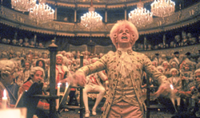Despite its unequivocal Frenchness, Sempe’s work touched a universal nerve, portraying culture-crossing human follies and neuroses. Photo: AFP
Family, friends and fans have paid tribute to French cartoonist Jean-Jacques Sempe, whose simple line drawings tinted with humour graced the covers of The New Yorker magazine and granted him international acclaim.
A funeral Mass for Sempe - affectionately known as J.J. in the United States - took place on Friday at the Church of Saint-Germain-des-Pres in Paris. Friends and relatives honoured the artist, who died last week at age 89, and his legacy. A private funeral was held at the city’s renowned Montparnasse cemetery.
Already a subscriber? Log in
Save 30% OFF The Star Digital Access
Cancel anytime. Ad-free. Unlimited access with perks.





